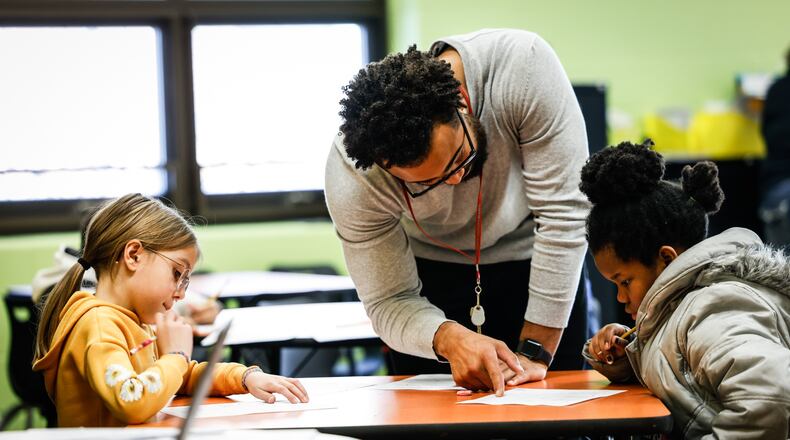A Dayton Daily News examination of how the COVID-19 pandemic is impacting school education in the Dayton region found the use of additional staffing is helping districts get students up to speed in areas where they saw learning lost.
Huber Heights schools hired 30 additional tutors for their six elementary schools and Dayton Public Schools hired 96 additional teachers for grades 1, 2 and 3 for teaching in reading and math. Mad River hired five literacy support tutors, one per elementary building, and one for the districts’ 5-6 building, said superintendent Chad Wyen.
According to a study from Ohio State University published in August 2021, Ohio students who attended virtual school in the 2020 school year missed the equivalent of a half to a full year in math and between one-third and one-half of a year in language arts, depending on the grade level. The study looked at the results of state-mandated testing.
The COVID-19 pandemic caused unprecedented disruptions to teaching and learning in Ohio, including school closures, sudden changes to instructional delivery (online and hybrid), economic hardship, and social isolation, the study said.
The OSU study found:
• Third-grade students learned roughly 20 percent less on average between November 2020 and April 2021 (between the fall and spring administration of the ELA exam) as compared to students in prior years.
• These learning declines were larger for lower-achieving, economically disadvantaged, and minority student subgroups and among districts that spent the majority of the year in fully remote instruction. Students who performed in the highest quartile of achievement in the fall learned as much between fall and spring of the 2020-21 school year as they did during the same span in years prior to the pandemic.
In Dayton schools, superintendent Elizabeth Lolli said the district has two teachers in each classroom and can split the class in half. One side can do a math lesson and the other side can do a reading lesson.
“Due to the reduced class size, teachers can work with smaller groups of students, identify gaps in learning more quickly, and provide the individualized attention needed to close those gaps,” Lolli said.
Dayton Public has been using federal COVID-19 funds for the project, but Kincaid said if it is successful, the district will have to find another revenue source to continue the project. In the 2021-22 school year, the district has spent more than $3.6 million on the project so far.
Huber Heights chose to hire additional tutors to address their own learning loss problem. Huber Heights has one tutor per grade at the elementary level at all six elementary schools, and the tutors can pull small groups of students out for additional instruction in reading and math. The tutors are there to help with mastery of skills, according to Huber Heights’s return to in-person instruction plans.
At Charles Huber Elementary, tutor Lea Wilcox works with three students in a small group on their reading skills. Wilcox is one of the elementary school tutors who are working in all six Huber Heights elementary schools.
The students have letters in front of them and come up with words – k for kangaroo, j for just.
“Cry, I haven’t heard that one,” Wilcox said, after one student’s turn. “You guys are good!”
The district is spending about $500,000 of the approximately $17 million they received in federal COVID-19 dollars allocated for schools, said Cassie Dietrich, a spokeswoman for the district.
Dietrich said there isn’t data yet on how effective the tutors have been. The district will know more after state testing in the spring, she said.
About the Author

